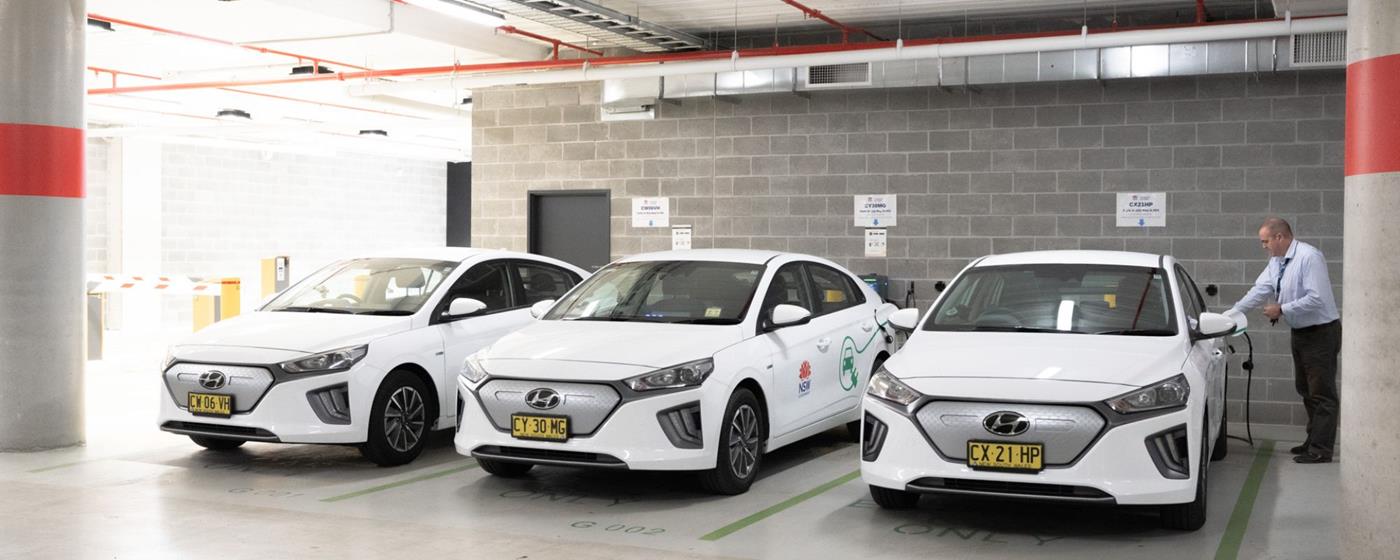Unlocking Financial Benefits: Transitioning to Electric Fleets

Explore how switching to an electric fleet can significantly reduce operational costs and boost your business’s sustainability.
When will more Australian Organisations Transition to an Electric Fleet?
Many Australian organisations are already making the transition to electric fleets, and the trend is expected to continue growing in the coming years. With the increasing availability of electric vehicles and the development of charging infrastructure, businesses are finding it more feasible to electrify their fleets. The shift towards electric fleets is driven by a combination of factors, including the desire to reduce greenhouse gas emissions, lower operating costs, and enhance brand image through sustainability initiatives.
Another reason why more Australian organisations are transitioning to electric fleets is the government’s push for eco-friendly transportation. Australia has set ambitious targets to reduce carbon emissions and increase the adoption of electric vehicles. As a result, there are various incentives and grants available to businesses that make the switch to electric fleets. These incentives, coupled with the long-term cost savings, make the transition financially beneficial for organisations.
Overall, the transition to electric fleets in Australia is gaining momentum, and it is only a matter of time before more organisations join the movement.
The Cost-Benefit Analysis of Electric vs. Traditional Fuel Vehicles
When considering the financial advantages of electrifying your fleet, it is essential to conduct a comprehensive cost-benefit analysis. While electric vehicles may have a higher upfront cost compared to traditional fuel vehicles, they offer significant long-term savings.
One of the key cost-saving factors is the reduced maintenance requirements of electric vehicles. Compared to internal combustion engines, electric motors have fewer moving parts and do not require oil changes or as many regular maintenance checks. This leads to lower maintenance costs and decreased downtime for fleet vehicles.
Additionally, the cost of energy for electric vehicles is typically lower than that of traditional fuel vehicles. Charging an electric vehicle is often cheaper than refuelling a gasoline or diesel vehicle, especially when taking advantage of off-peak electricity rates. By analysing the projected energy costs for your fleet, you can determine the potential savings of transitioning to electric vehicles.
Moreover, electric vehicles are generally more energy-efficient than traditional fuel vehicles. This means that for the same distance travelled, electric vehicles consume less energy, resulting in reduced fuel expenses. The combination of lower maintenance costs and energy savings can result in considerable financial benefits for businesses that electrify their fleets.
Government Incentives and Tax Breaks for Electric Vehicles
One of the significant financial advantages of electrifying your fleet is the availability of government incentives and tax breaks. Governments at various levels are actively promoting the adoption of electric vehicles to reduce carbon emissions and improve air quality.
In Australia, there are several incentives and grants available to businesses that transition to electric fleets. These incentives can include financial assistance for purchasing electric vehicles, grants for installing charging infrastructure, and tax breaks for businesses that own and operate electric vehicles. By taking advantage of these incentives, businesses can offset the initial investment and accelerate the financial benefits of transitioning to electric fleets.
It is essential for organisations to stay updated on the available government incentives and tax breaks as they can vary over time and across different regions. By leveraging these incentives, businesses can maximise their financial savings and contribute to a more sustainable future.
Enhancing Brand Image and Customer Loyalty Through Green Initiatives
Transitioning to electric fleets not only offers financial benefits but also provides an opportunity for businesses to enhance their brand image and customer loyalty. In today’s environmentally conscious society, consumers are increasingly choosing brands that demonstrate a commitment to sustainability.
By adopting electric fleets, businesses can showcase their dedication to reducing carbon emissions and promoting clean transportation. This commitment to sustainability can resonate with environmentally conscious consumers, leading to increased brand loyalty and customer satisfaction. In addition, businesses can leverage their green initiatives in marketing campaigns and corporate communications to differentiate themselves from competitors.
Moreover, electric fleets can attract new customers who prioritise sustainability and eco-friendly practices. By aligning with customer values and expectations, businesses can gain a competitive edge and position themselves as leaders in the transition to a greener future.
Overall, investing in electric fleets not only yields financial advantages but also strengthens the brand image and fosters customer loyalty.
What Electric Fleet Vehicles are Currently Available?
The market for electric fleet vehicles is rapidly expanding, offering a wide range of options for businesses looking to electrify their fleets. Major automotive manufacturers are introducing electric models specifically designed for fleet use, catering to various industries and transportation needs.
Electric sedans and hatchbacks, such as the Tesla Model 3 and Kia EV6, are popular choices for businesses with commuting or urban delivery fleets. These vehicles offer a balance of range, affordability, and performance, making them suitable for everyday use.
For businesses with larger transportation requirements, electric vans and trucks are becoming increasingly available. Companies like Renault, Ford, and Mercedes-Benz are developing electric commercial vehicles with extended range capabilities and ample cargo space, making them suitable for delivery services, logistics, and other fleet applications.
In addition to passenger vehicles and commercial vans, electric buses are also gaining traction in the market. Electric buses provide a sustainable and efficient solution for public transportation and shuttle services.
As technology continues to advance and the demand for electric vehicles grows, more options will become available, offering businesses greater flexibility in choosing the most suitable electric fleet vehicles for their specific needs.
Case Studies: Success Stories of Businesses that Transitioned to Electric Fleets
Examining the success stories of businesses that have already transitioned to electric fleets can provide valuable insights into the financial benefits and operational advantages.
One such success story is the delivery service company, UPS. UPS has been gradually electrifying its fleet by adding electric delivery vans and trucks. Through this transition, UPS has experienced significant cost savings in fuel expenses and maintenance. Furthermore, the company has improved its sustainability profile and gained positive brand recognition for its commitment to clean transportation.
Another case study is the ride-hailing company, Uber. Uber has been actively promoting the adoption of electric vehicles among its drivers by offering incentives and facilitating access to charging infrastructure. By transitioning to electric vehicles, Uber drivers have reported lower operating costs, increased customer satisfaction, and improved earnings.

These case studies highlight the tangible financial benefits and positive outcomes that businesses can achieve by transitioning to electric fleets. By learning from these success stories and tailoring the strategies to their specific operations, businesses can unlock the full potential of electric fleets and drive their own success.
For a deeper look into how to successfully plan, implement, and manage EV charging for your fleet, download our Fleet Charging Whitepaper here.
Have further questions? Contact us:
sales@evse.com.au
1300 406 210


